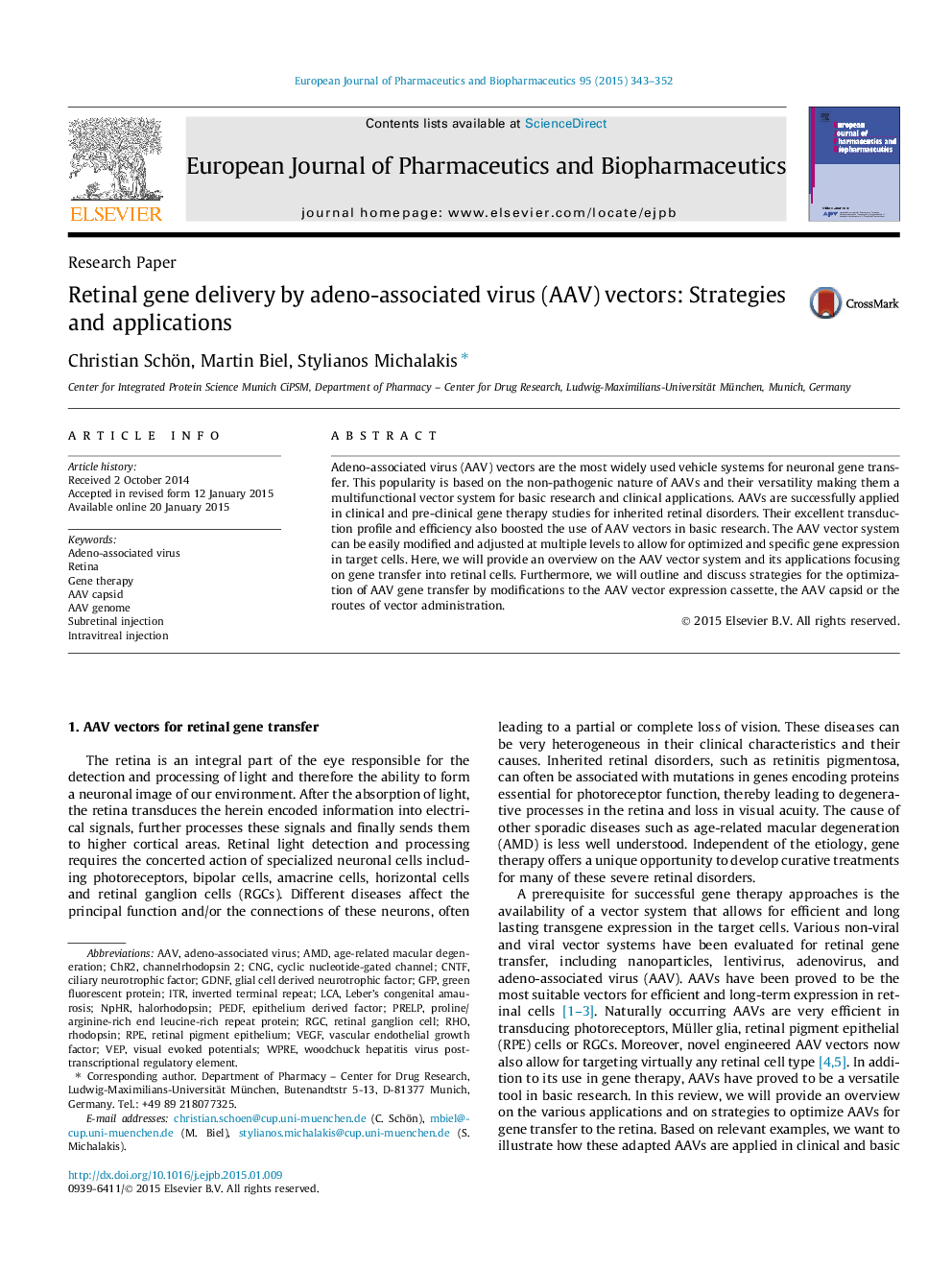| Article ID | Journal | Published Year | Pages | File Type |
|---|---|---|---|---|
| 2083295 | European Journal of Pharmaceutics and Biopharmaceutics | 2015 | 10 Pages |
•Adeno-associated virus (AAV) vectors are valuable tools for retinal gene transfer.•AAV vectors are widely used in basic research.•Multiple optimizations have increased the versatility of AAV vectors.•Promising AAV vector-based retinal gene therapies are currently being developed.
Adeno-associated virus (AAV) vectors are the most widely used vehicle systems for neuronal gene transfer. This popularity is based on the non-pathogenic nature of AAVs and their versatility making them a multifunctional vector system for basic research and clinical applications. AAVs are successfully applied in clinical and pre-clinical gene therapy studies for inherited retinal disorders. Their excellent transduction profile and efficiency also boosted the use of AAV vectors in basic research. The AAV vector system can be easily modified and adjusted at multiple levels to allow for optimized and specific gene expression in target cells. Here, we will provide an overview on the AAV vector system and its applications focusing on gene transfer into retinal cells. Furthermore, we will outline and discuss strategies for the optimization of AAV gene transfer by modifications to the AAV vector expression cassette, the AAV capsid or the routes of vector administration.
Graphical abstractFigure optionsDownload full-size imageDownload high-quality image (69 K)Download as PowerPoint slide
